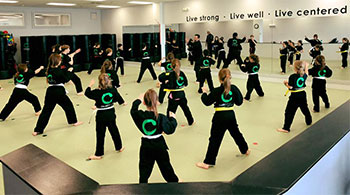Teaching Kids in the “Golden Age”
By Andy Mishkin In Insight In my last blog post, I discussed developmental milestones in the lives of five- to six-year-olds; this week, I’ll be talking about seven- to nine-year-olds.
In my last blog post, I discussed developmental milestones in the lives of five- to six-year-olds; this week, I’ll be talking about seven- to nine-year-olds.
A parent once said to me: “seven is the age of reason.” That’s a simple and elegant way to describe seven- to nine-year-olds. They make a huge jump cognitively, physically, and socially, and we start to see the outlines of the adults they will become. They gain basic reasoning skills, which means parents and instructors can use logic as a teaching tool. During this “Golden Age,” kids are stronger and have much better gross motor skills, so they have increased muscular endurance and can learn more complex movements. Most importantly, they are much more emotionally stable, but they still want a close connection with adults – they are not yet seeking independence. All of these factors mean that you have a young person who is more able to learn and more committed to learning from the adults in their lives.
Seven- to nine-year-olds still have some challenges to overcome. They’re lacking fine motor skills and still have a tendency to get easily distracted. Emotionally, they are just starting to learn how to handle frustration when things don’t work out the way they want, or they encounter something very difficult. We use several basic teaching techniques to help them achieve these milestones.
First, we want them to become intrinsically motivated – a.k.a self-motivated. That way, they don’t need as many social or personal signs of success to keep growing. We teach this age group to “Train Like a Black Belt”; helping them work independently of our direct supervision for increasing amounts of time while we are working with a group. We praise them for their independent achievements and effort. Next, we get them focused on achieving small, attainable goals, such as their next stripe, and give them the tools they need to practice on their own. We often hear from parents that they see their children practicing on their own at home; a sign that they are developing the inner resiliency that will turn into self-discipline over time.
Second, we make things challenging. Nothing makes me and my team happier than handing out stripes, belts, and merit badges, but they have to earn them. If they do not know the material, we can’t give them the stripe. Sometimes, I am happy if they don’t succeed the first time or two because it helps us show them that Karate is about enjoying the work as well as the reward. Fortunately, we can tap into their newly developed logical reasoning skills to help set them up for future success. We set clear expectations, explain what they are doing right, show them what they need to accomplish, give them a timeline, and help them practice. It is very rewarding to watch a child manage their initial disappointment, buckle down, and achieve their goal. This is just one of the many joys of teaching a “Golden Age” child.
Next time, we will discuss Pre-Teens. Until then, I hope you are all Living Strong, Well, and Centered.



